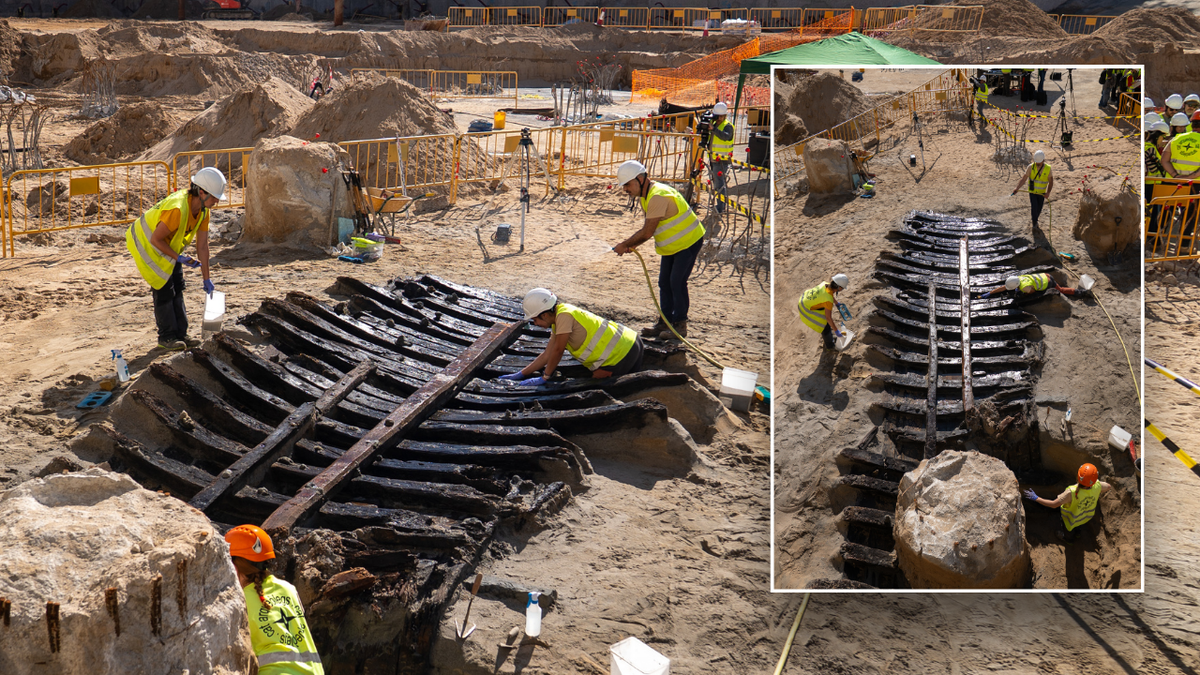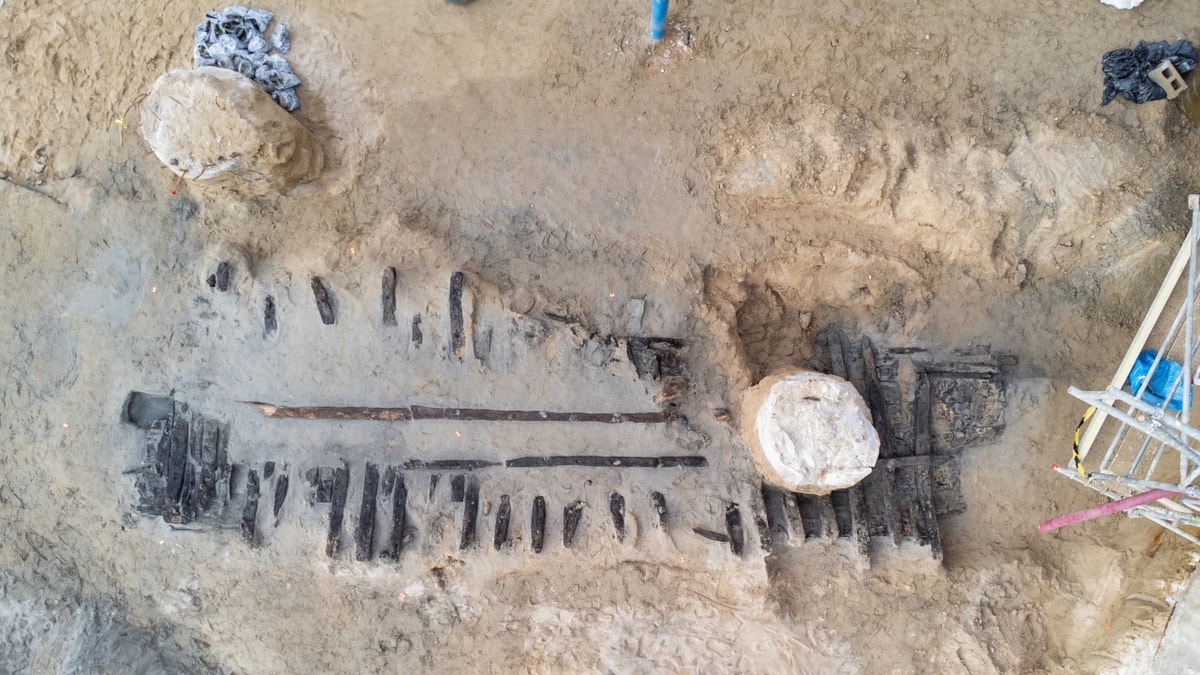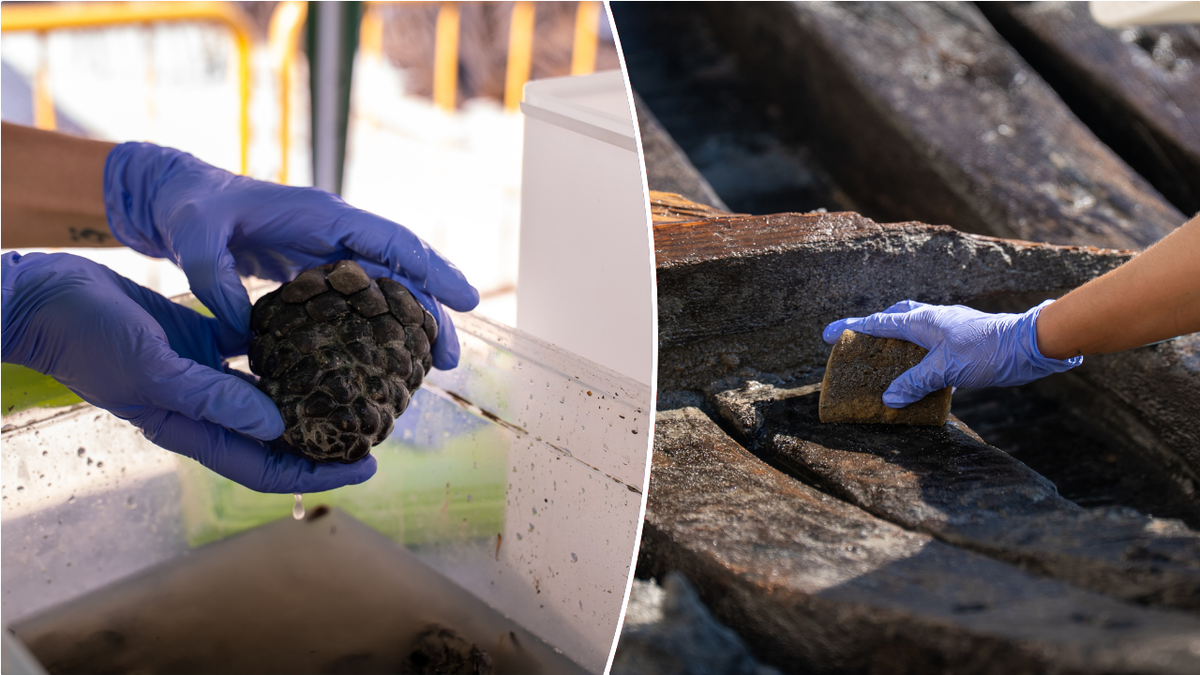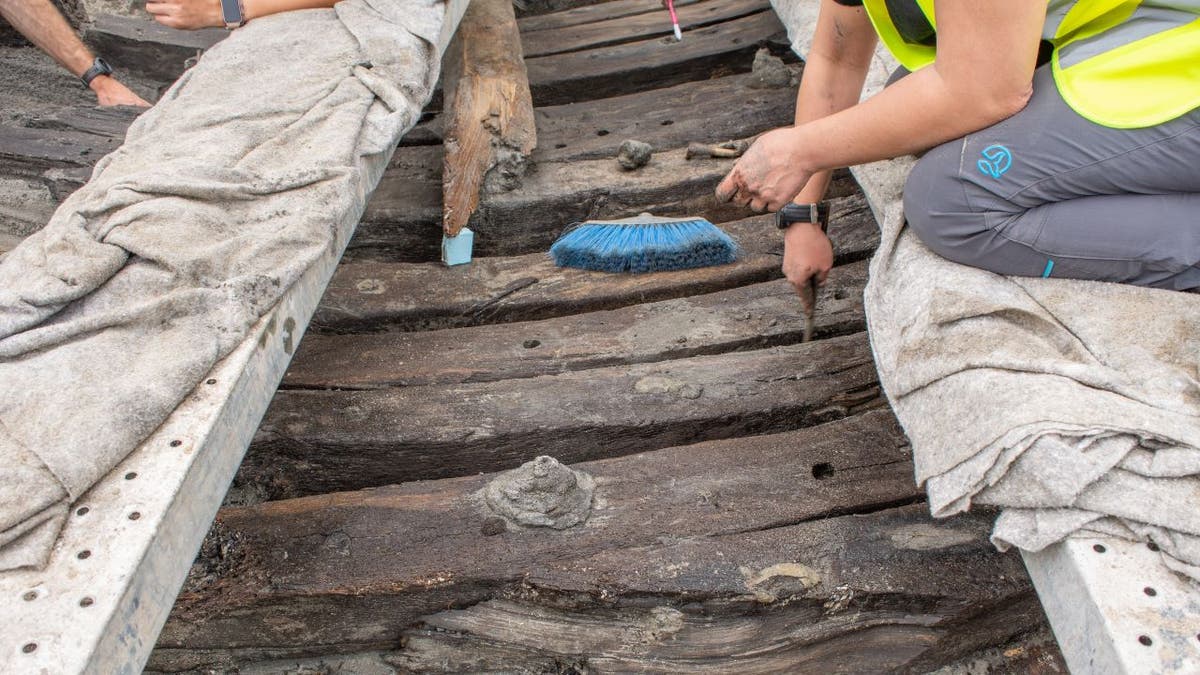A centuries-old shipwreck was recently found in an unlikely place in Spain: a former fish market.
The Barcelona Institute of Culture (ICUB) said the decayed ship was found in the former Mercat del Peix – which translates to "fish market" – in the Catalan capital. Named Ciutadella I, the shipwreck was found between April 10 and April 15.
Discovered during construction work, the ship dates back between the 15th and 16th centuries. The discovery reflects Barcelona's maritime history, said ICUB.
GARDEN OF EDEN'S TRUE LOCATION 'CAN ONLY BE' AT UNUSUAL TOURIST LANDMARK, NEW ARGUMENT CLAIMS
"Starting in 1439, with the construction of the first artificial docks, the dynamics of the coastline were altered, and the sandbar known as the Tasca, which had protected the city for centuries, disappeared," said the organization's statement, which was translated from Catalan to English.
"The combination of coastal drift, the mouth of the Besòs River, and storms caused a rapid advance of the beach, covering ancient marine spaces."

Archaeologists in Spain recently discovered the remnants of a shipwreck below a historic area of Barcelona. (Barcelona Institute of Culture (ICUB))
ICUB also noted that ship's main structure – a "skeleton" measuring 32 feet in length and nearly 10 feet in width – also consisted of 30 curved wooded frames.
HISTORIC MARYLAND CHURCH OPENS DOORS TO VISITORS 320 YEARS AFTER CLOSING DOWN
"At least seven stakes of the hull [were also found]," said the statement.
"The planks are nailed to the frames with circular-section wooden pegs, a type of wooden nail used to join the pieces."

The shipwreck dates back to the 15th or 16th centuries, according to archaeologists. (Barcelona Institute of Culture (ICUB))
"Two longitudinal pieces – palmellars or saws – fixed with iron nails are also preserved," ICUB noted.
"This system, known as skeleton construction, was common in the medieval Mediterranean and spread throughout Europe from the mid-15th century."
For more Lifestyle articles, visit foxnews.com/lifestyle
Researchers are currently studying organic remains found near the shipwreck, which include hazelnut seeds and whole pine cones, and "could have a chronology similar to that of the vessel."

Pine cones, suspected to date back hundreds of years, were also found at the Barcelona excavation site. (Barcelona Institute of Culture (ICUB))
Yet ICUB also cautioned that the ship's remains "are in a very fragile state of preservation" at the moment.
The ship's survival is considered a miracle, as wood deteriorates easily.
The shipwreck will be transported to a facility where its wood will be desalinated, in order to preserve it.
"Although wood is a common material in historical shipbuilding, it only preserves in very specific environments, such as aquatic ones, and deteriorates rapidly when exposed to air," the government agency noted.
CLICK HERE TO SIGN UP FOR OUR LIFESTYLE NEWSLETTER
"The waterlogged wood is extremely sensitive, and to prevent it from drying out and degrading, it has been partially covered with the original sand that surrounded it," the statement added.
"The Archaeology Service of Barcelona, with advice from the Museum of Archaeology of Catalonia – Centre for Underwater Archaeology of Catalonia (CASC) - is working to ensure the proper documentation and preservation of the structure."

Archaeologists are in the process of carefully preserving the wood, which is extremely delicate after being unearthed. (Barcelona Institute of Culture (ICUB))
Archaeologists plan to conduct additional work – including 3D documentation, marking, sampling, and preparing to move the ship in water-filled containers.
The shipwreck will be transported to a facility where its wood will be desalinated, in order to preserve it.
CLICK HERE TO GET THE FOX NEWS APP
"This treatment is essential to preserve both the physical structure of the ship and its archaeological value, as it constitutes a unique source of knowledge about navigation and shipbuilding techniques used in 15th and 16th century Barcelona," ICUB's press release concluded.
.png)
 German (DE)
German (DE)  English (US)
English (US)  Spanish (ES)
Spanish (ES)  French (FR)
French (FR)  Hindi (IN)
Hindi (IN)  Italian (IT)
Italian (IT)  Russian (RU)
Russian (RU)  15 hours ago
2
15 hours ago
2








Comments